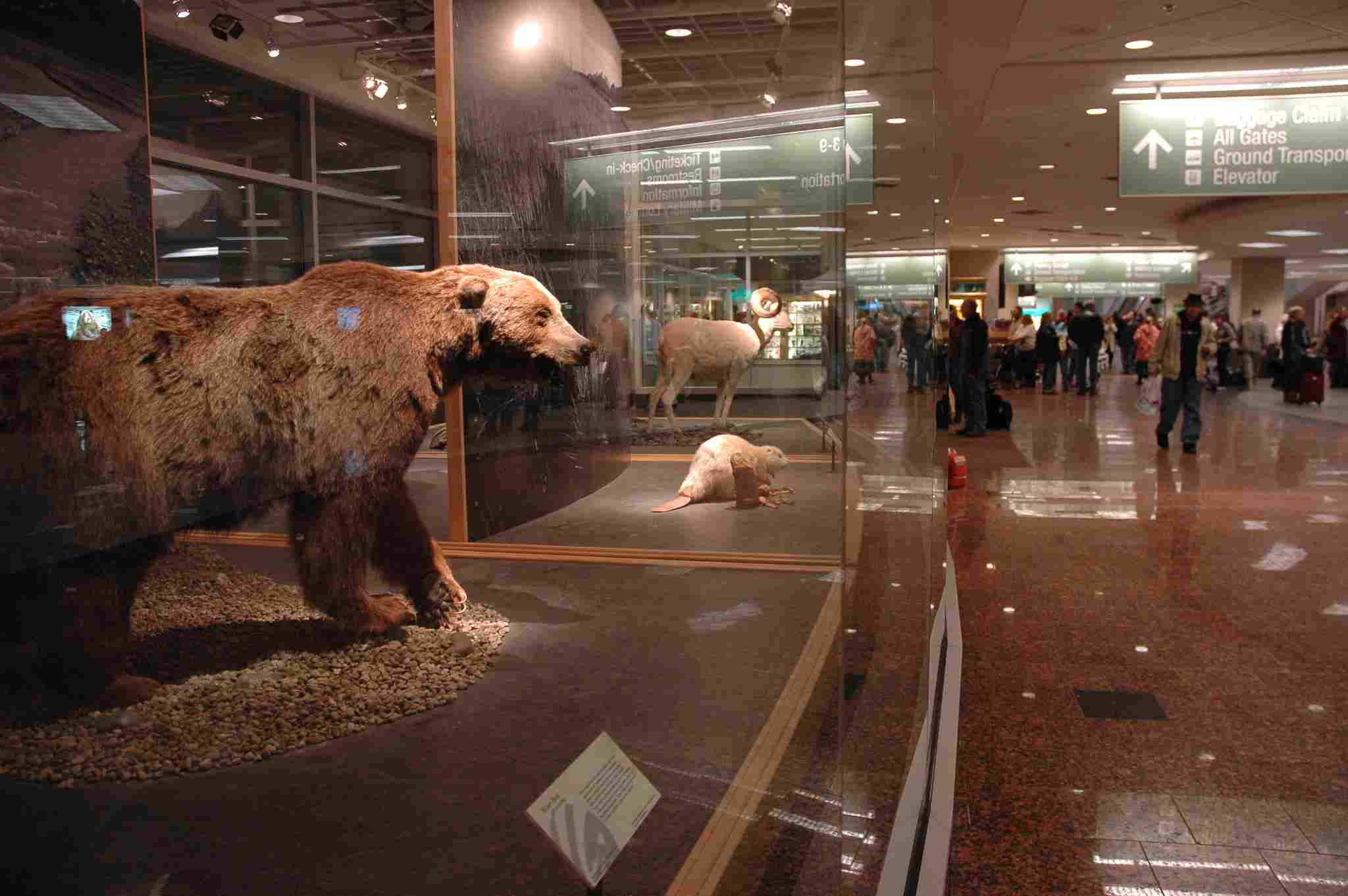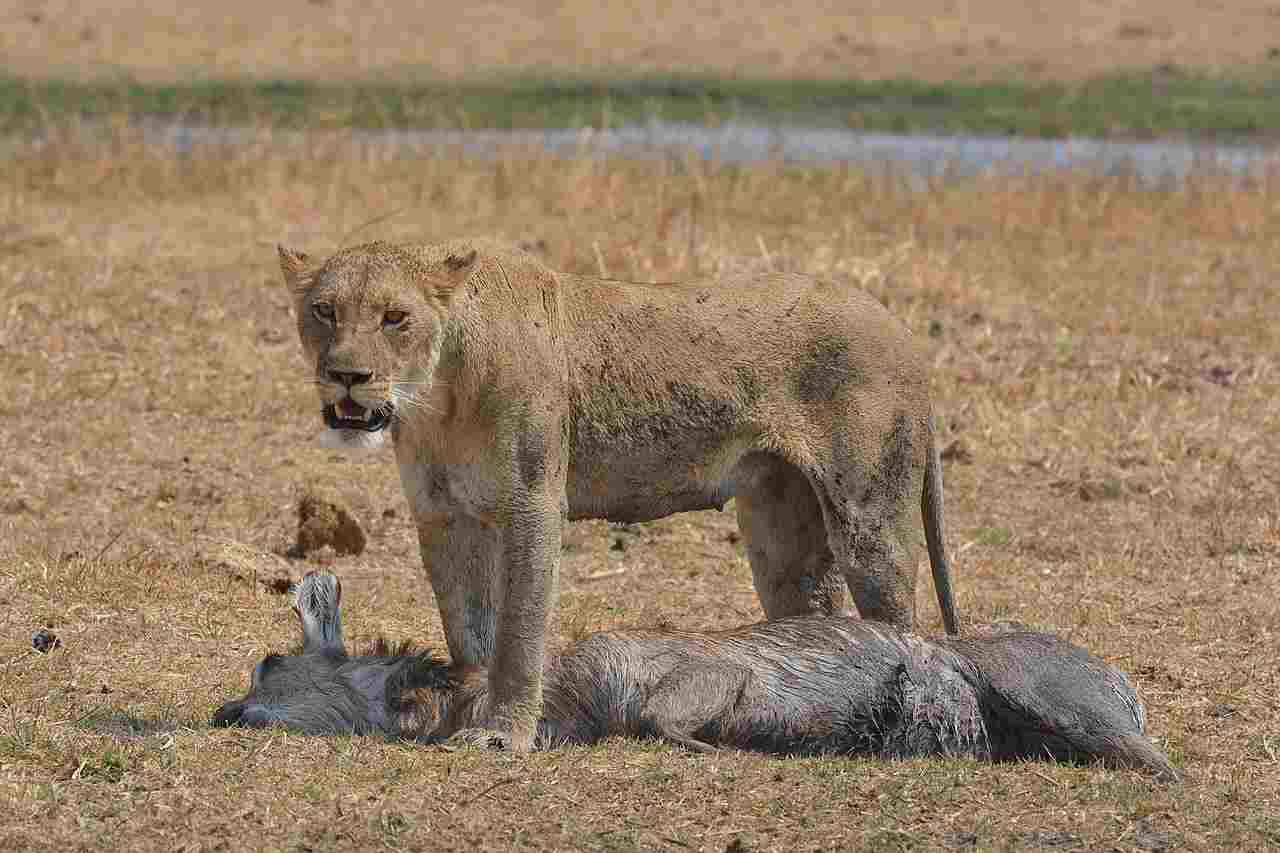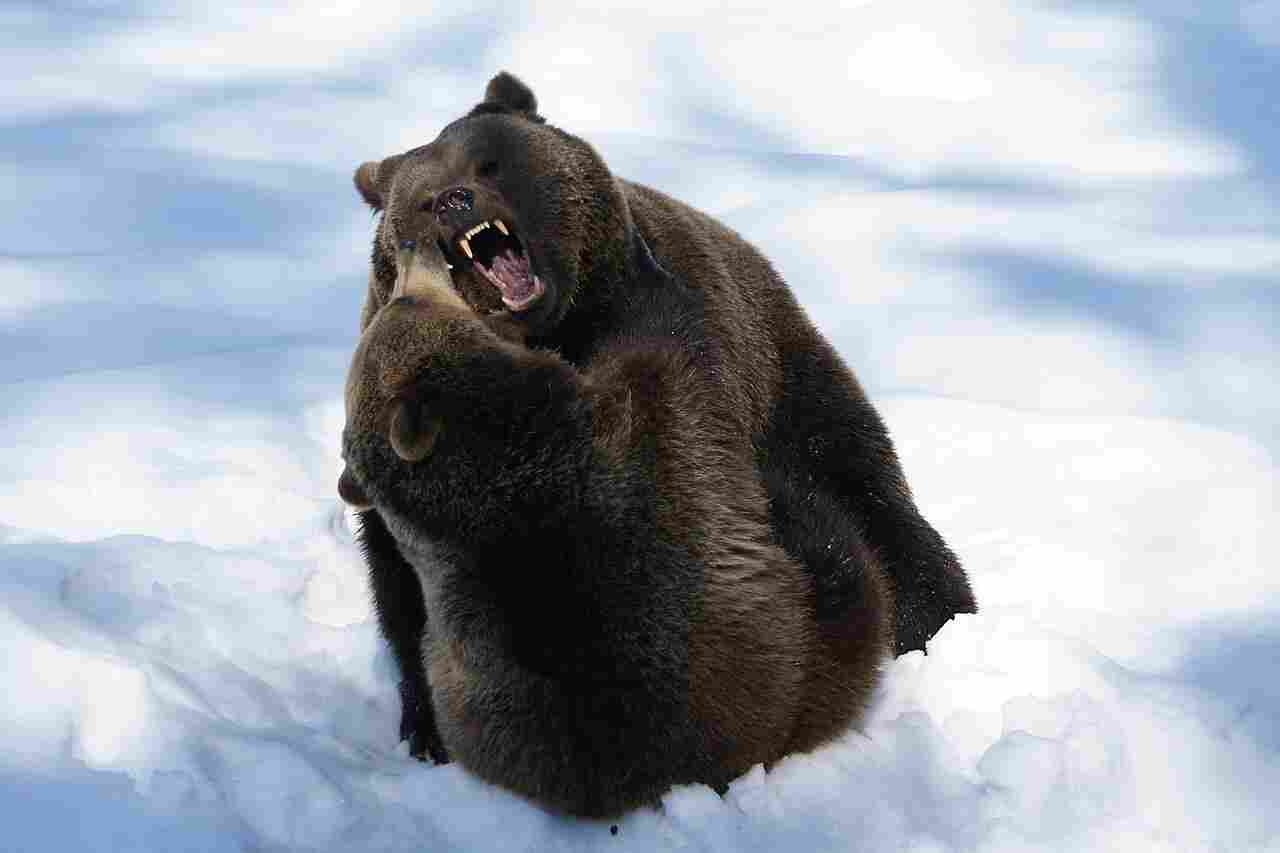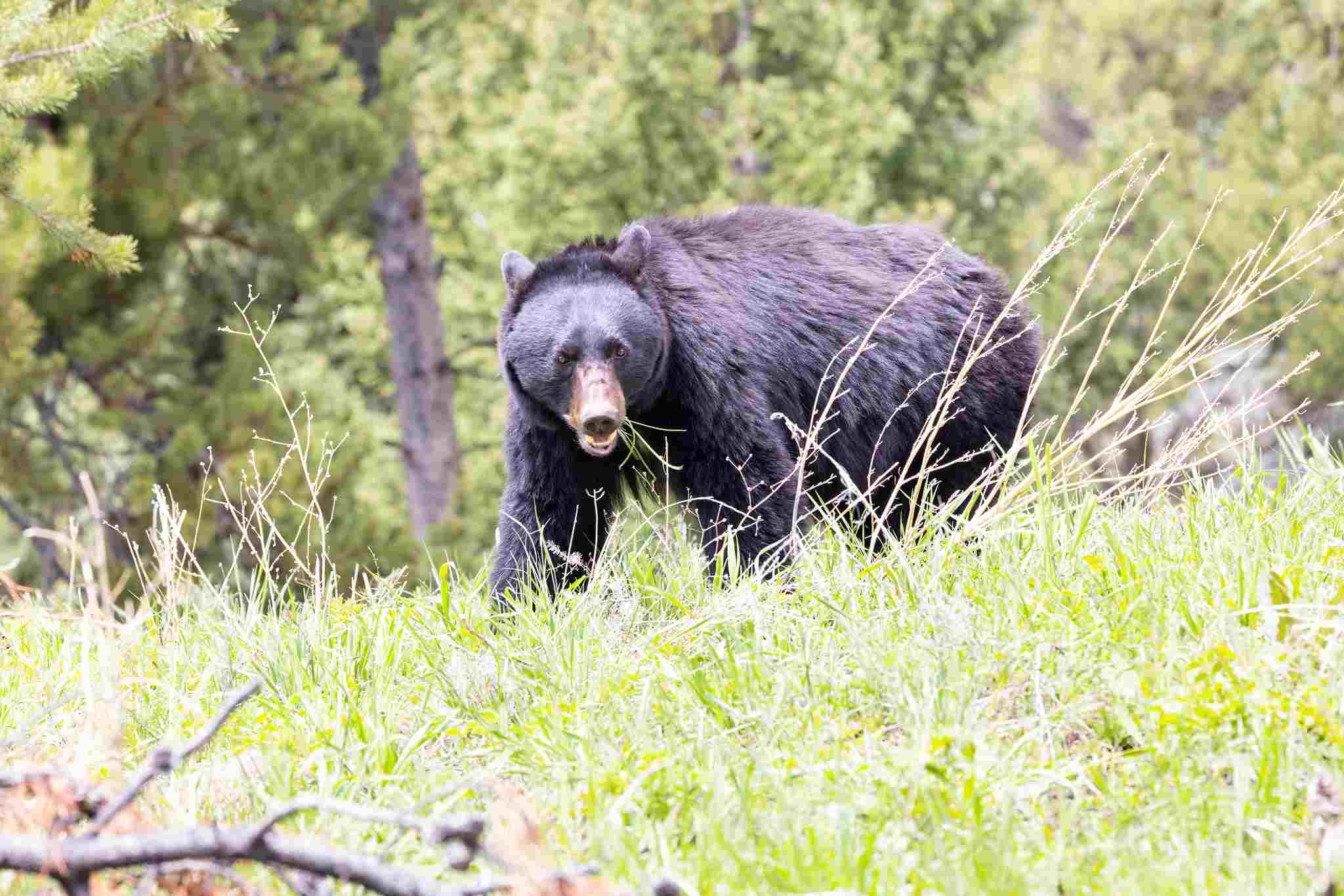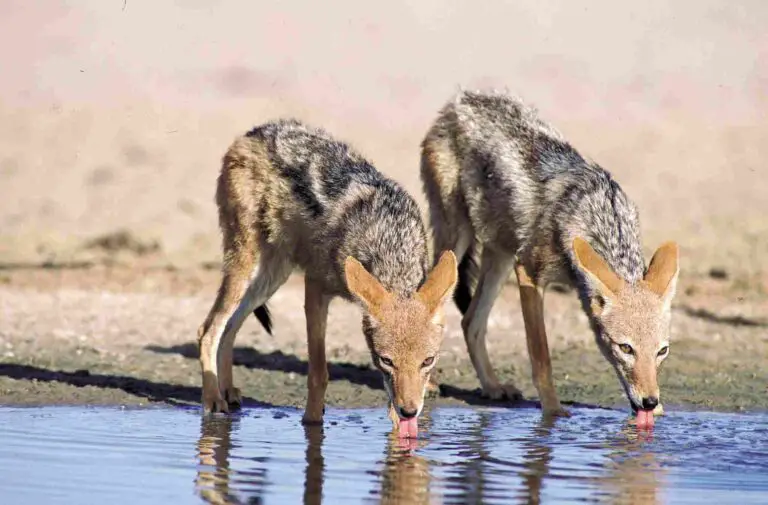Alligator Vs Bear Who Would Win, Overall Comparison
In a potential confrontation between an alligator and a bear, we explore the contrasting characteristics of these formidable creatures. While both are powerful predators, differences in agility, speed, and overall strength play crucial roles in determining the likely outcome. This analysis outlines these distinctions before delving into a confrontation, predicting that the bear, especially larger species like the grizzly and kodiak, holds advantages over the alligator in a direct encounter.
Alligator vs Bear Fight Prediction: Assessing the Potential Outcome in a Confrontation
In a face-off between an alligator and a bear, the outcome hinges on their inherent characteristics, with the bear, particularly larger species such as the grizzly and kodiak, holding key advantages. Despite the alligator’s massive bite force, the bear’s agility, speed, sheer power, and swimming capabilities are likely to tip the scales in its favor.
I). Alligator’s Characteristics:
– Alligators are known for their massive bite force, making them formidable predators in aquatic environments. Their ambush tactics and ability to lurk beneath the water’s surface provide strategic advantages in hunting.
II). Bear’s Characteristics:
– Bears, especially larger species like the grizzly and kodiak, are characterized by their agility, speed, sheer power, and the ability to swim efficiently. These traits contribute to their versatility and dominance in various terrains.
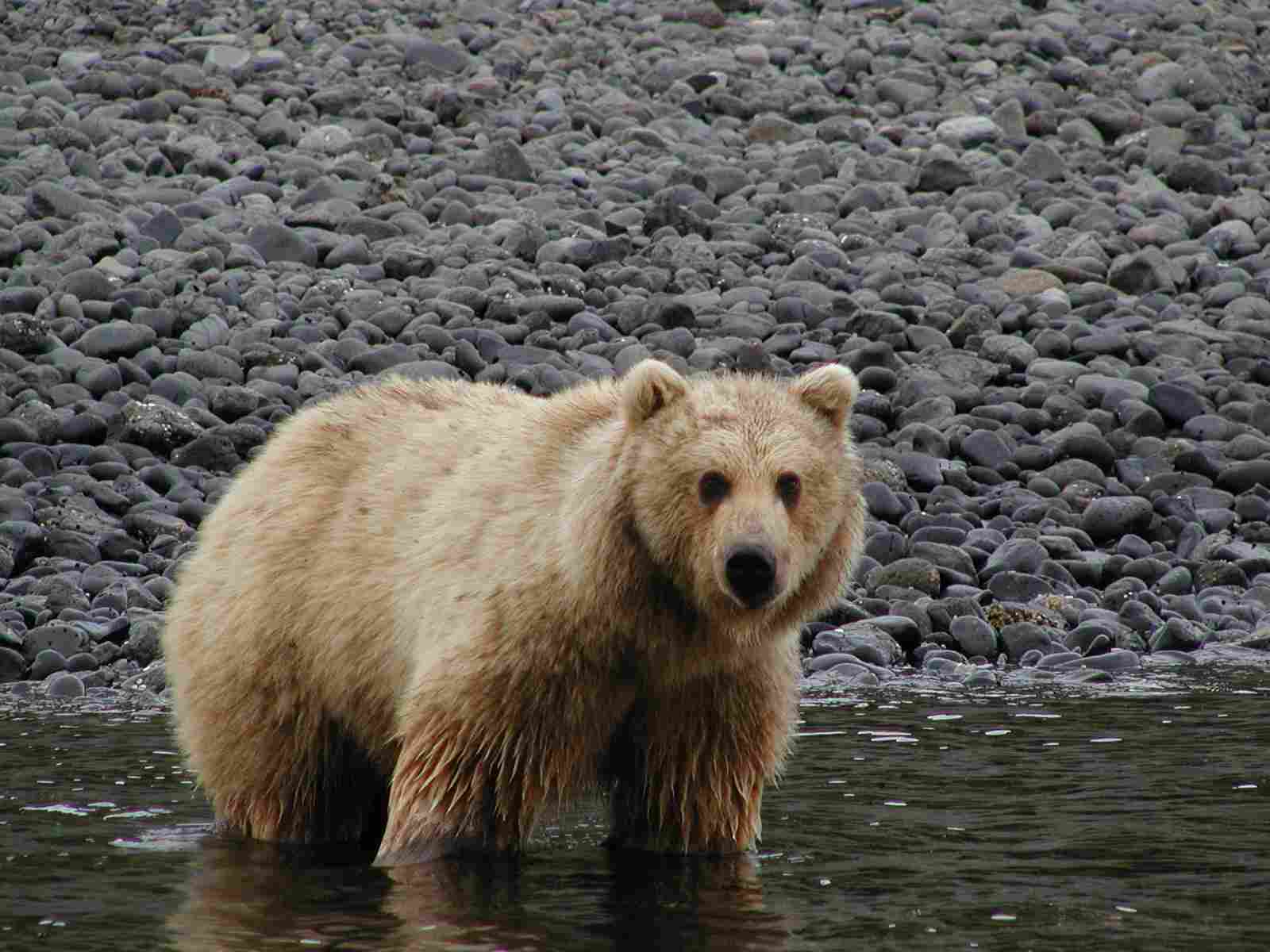
III). Agility, Speed, and Sheer Power:
– Bears possess superior agility, speed, and sheer power compared to alligators. In a direct confrontation, the bear’s ability to maneuver swiftly and generate force gives it a significant advantage over the alligator.
IV). Bear’s Swimming Proficiency:
– Bears are adept swimmers, capable of efficiently navigating aquatic environments. This adds another dimension to their versatility, enabling them to engage with threats in water as effectively as on land.
V). Alligator’s Ambush Tactics:
– The alligator’s best chance lies in utilizing its ambush tactics, particularly in a wetland environment. In such scenarios, the element of surprise could be crucial for the alligator to gain an upper hand.
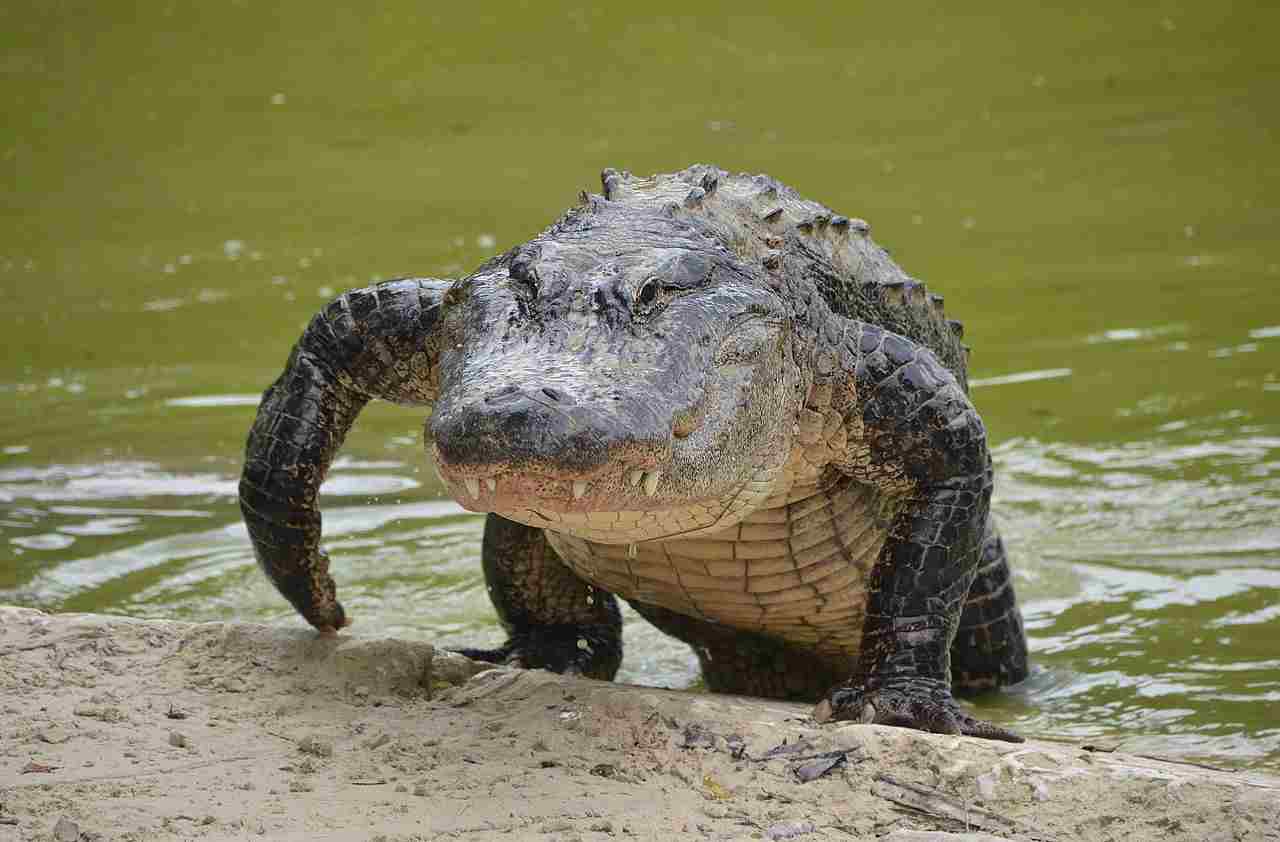
VI). Overall Dynamics:
– In this scenario, the bear, especially larger species like the grizzly and kodiak, is likely to emerge victorious in a fight against an alligator. The bear’s superior agility, speed, sheer power, swimming proficiency, and overall adaptability provide it with a strategic edge, offsetting the alligator’s formidable bite force. The alligator’s best chance remains in utilizing its ambush tactics, emphasizing the nuanced dynamics of a potential confrontation.
*Details of Comparison
| Criteria | Alligator | Bear |
| Taxonomy | Crocodylia, Alligatoridae, Alligator genus, A. mississippiensis, A. sinensis |
Carnivora, Ursidae, Ursus genus, Various species (e.g., brown bear, black bear, polar bear)
|
| Appearance | Robust, U-shaped snout, dark coloration |
Varied fur color, hump on shoulders, distinctive snout
|
| Size | 9-15 feet length |
Varies by species, up to 10 feet length
|
| Weight | 500-1,000 pounds |
200-1,500 pounds
|
| Bite Force (PSI) | ~2,125 PSI |
Varies by species, estimated 600-1,200 PSI
|
| Physical Offensive Adv. | Strong jaws, powerful tail |
Sharp claws, strong bite
|
| Physical Defensive Adv. | Armored skin, agile in water |
Strength, climbing abilities
|
| Speed | Land – 11 mph, Water – 20 mph |
Varies by species, generally up to 30 mph
|
| Agility | Agile in water |
Agile on land, climbing abilities
|
| Senses | Excellent eyesight, acute hearing, sensory pits |
Good eyesight, excellent smell, good hearing
|
| Overall Phys. Capacity | Streamlined for aquatic movement |
Versatile for terrestrial activities
|
| Habitat Preference(s) | Freshwater habitats |
Diverse habitats, including forests, tundra
|
| Tracks | Webbed footprints, tail drag marks |
Paw prints with claw marks
|
| Lifespan | Up to 50-70 years |
Varies by species, e.g., 20-30 years for brown bears
|
| Mode of Feeding | Ambush predator in water |
Omnivorous, forages for various food sources
|
| Intelligence | Basic problem-solving, limited social behavior |
Higher cognitive abilities, varied social structures
|
| Social Behavior | Generally solitary |
Varies by species, some solitary, some social
|
| Mode of Reproduction | Oviparous, lays eggs |
Viviparous, gives birth to live cubs
|
| Parental Behavior | Limited parental care |
Extensive maternal care
|
| Proximity to Human Areas | Inhabit areas near human communities |
Inhabit areas near human communities
|
| Behavior Toward Humans | Typically avoids humans |
Varied behavior, from avoidance to aggression
|
| Danger Posed to Humans | Rarely poses a significant threat |
Can pose a risk, especially if surprised or habituated
|
| Associated Precautions | Caution around water |
Proper food storage, making noise in bear country
|
| Conservation Status | American – Least Concern, Chinese – Endangered |
Varies by species, e.g., polar bear – Vulnerable, some brown bear populations – Least Concern
|
| Conclusion – Similarities | Both can inhabit areas close to human communities |
Conservation efforts are essential for both species
|
| Conclusion – Differences | Alligators generally less dangerous to humans than bears |
Reproductive strategies, parental behaviors, and ecological roles vary significantly between alligators and bears
|
Key Points
- Alligators are adapted for aquatic environments, while bears exhibit versatility for terrestrial habitats.
- Bears generally have a broader range of sizes and weights compared to alligators.
- Alligators have a higher estimated bite force, emphasizing their powerful jaws.
- Bears exhibit higher intelligence and more complex cognitive abilities than alligators.
- Alligators are primarily solitary, while bears show a range of social behaviors.
- Both species may come into proximity with human-inhabited areas, requiring specific precautions.
- Conservation statuses vary among different species, with some bears facing higher conservation concerns than alligator species.
- Reproductive strategies, parental behaviors, and ecological roles differ significantly between alligators and bears.
1. Taxonomy:
Alligator:
Order: Crocodylia
Family: Alligatoridae
Genus: Alligator
Species: A. mississippiensis (American alligator), A. sinensis (Chinese alligator)
Bear:
Order: Carnivora
Family: Ursidae
Genus: Ursus
Species: Various, including Ursus arctos (brown bear), Ursus americanus (American black bear), Ursus maritimus (polar bear)
2. Appearance:
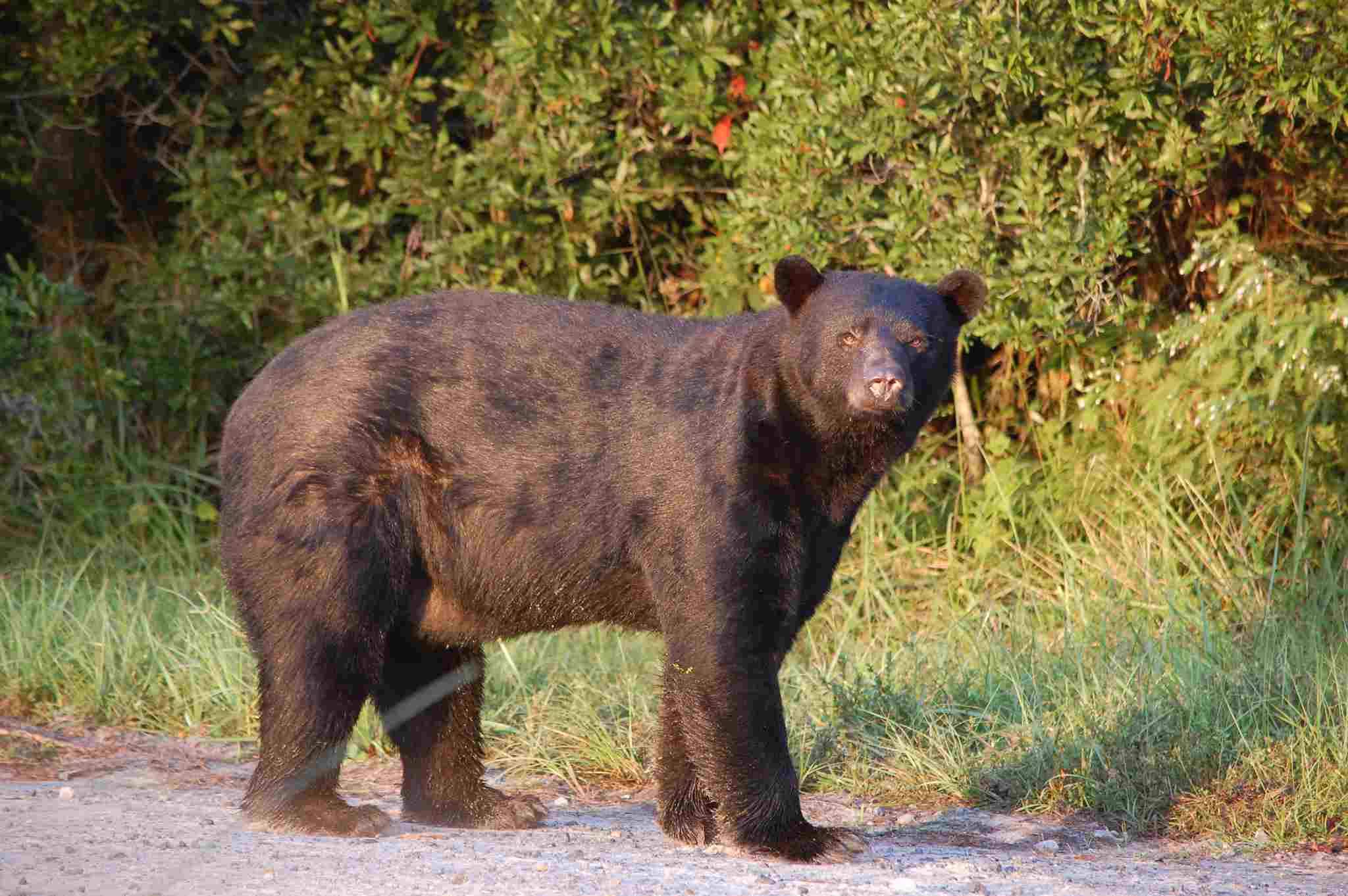
Alligator:
Robust, armored body with a broad, U-shaped snout
Dark coloration, often black or dark olive, providing camouflage in water
Bear:
Varied appearances, including brown, black, or white fur
Distinctive hump on shoulders, powerful limbs, and a snout of varying lengths
Comparison: Alligators have a streamlined, aquatic appearance, while bears exhibit terrestrial adaptations with fur suited to their respective environments.
Ecological Implications: Alligator appearance aids in ambush hunting underwater, blending into their swampy habitats. Bears’ diverse appearances reflect adaptations to different climates and habitats, from forests to tundra.
3. Size:
Alligator:
Adult length: 9-15 feet (2.7-4.6 meters)
Weight: 500-1,000 pounds (227-454 kg)
Bear:
Varies by species; e.g., brown bears can reach lengths of 7-10 feet (2.1-3 meters)
Weight: 200-1,500 pounds (91-680 kg)
Comparison: Bears exhibit greater size variation among species, with some exceeding the size of alligators, but alligators have a more consistent size within their species.
Ecological Implications: Size differences impact ecological roles, with alligators serving as apex predators in aquatic ecosystems, while bears’ size variations may influence their roles in diverse terrestrial environments.
4. Weight:
Alligator:
500-1,000 pounds (227-454 kg)
Bear:
200-1,500 pounds (91-680 kg)
Comparison: Bears generally have a broader weight range, accommodating different species, whereas alligators fall within a more defined weight spectrum.
Ecological Implications: Weight influences the energy requirements, hunting strategies, and overall ecological impact of these species within their respective habitats.
5. Bite Force (PSI – Pounds per Square Inch):
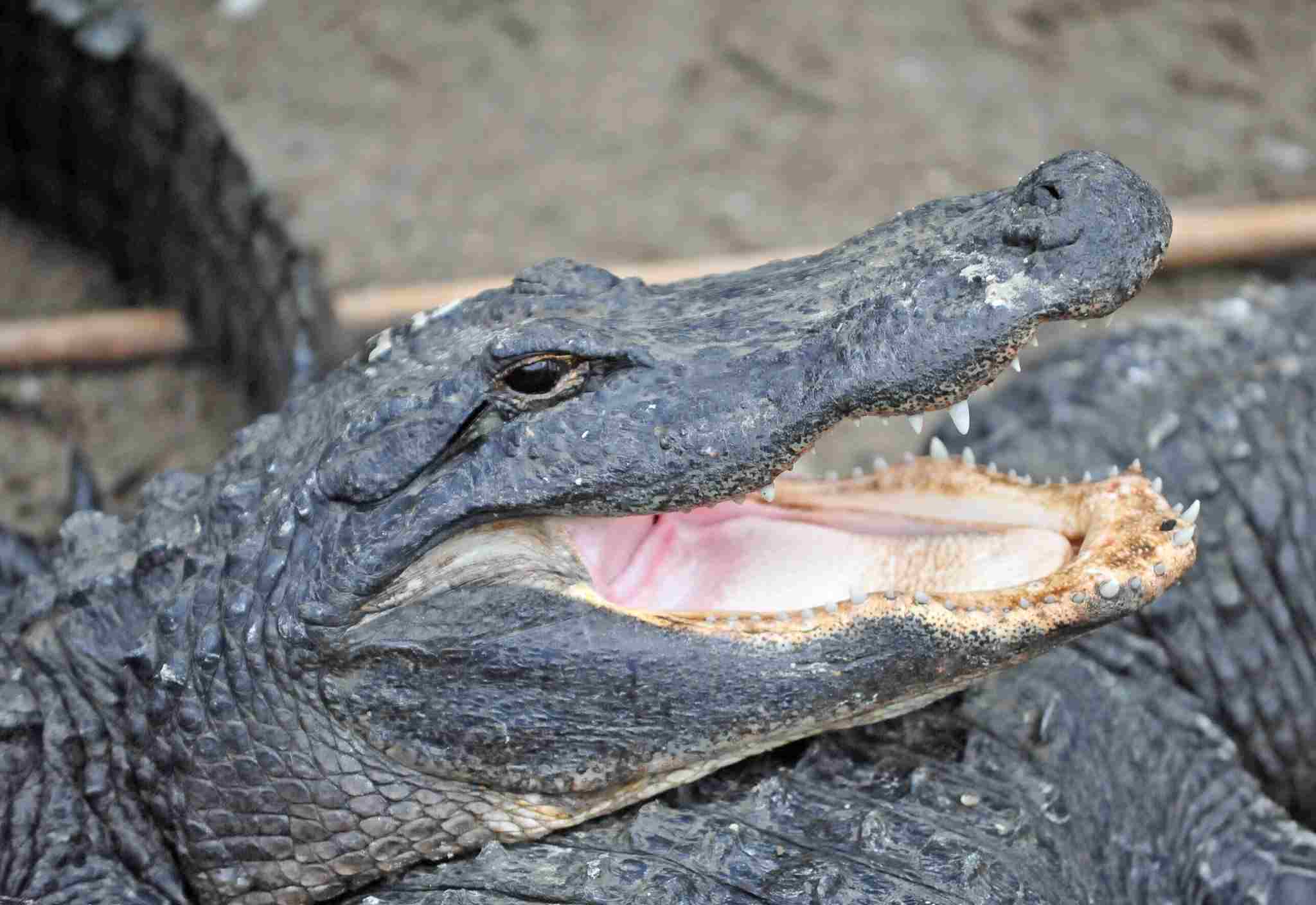
Alligator:
Around 2,125 PSI
Bear:
Varies by species; estimated range 600-1,200 PSI for different bear species
Comparison: Alligators possess a higher estimated bite force compared to most bears, emphasizing their powerful jaws for capturing prey.
Ecological Implications: Bite force impacts hunting efficiency and the ability to consume a wide range of prey, contributing to the ecological dynamics within their ecosystems.
6. Physical Offensive Advantages:
Alligator:
Strong jaw muscles and sharp teeth for efficient prey capture
Powerful tail for propulsion in water
Bear:
Sharp claws and powerful forelimbs for digging and climbing
Strong bite and predatory instincts
Comparison: Alligators rely on their powerful jaws and streamlined bodies for offensive capabilities, while bears utilize claws and strength in their limbs for offensive actions.
Ecological Implications: These offensive adaptations contribute to the efficiency of hunting and foraging strategies, shaping the interactions between these species and their prey.
7. Physical Defensive Advantages:
Alligator:
Tough, armored skin provides protection from predators
Quick and agile movements in water for evading threats
Bear:
Strength and size act as deterrents to many potential threats
Climbing abilities for escaping danger
Comparison: Alligators rely on their armored skin and aquatic agility for defense, while bears use their physical strength and versatile movements to deter and escape threats.
Ecological Implications: Defensive adaptations influence the survival strategies of these species, impacting their interactions with potential predators and competitors.
8. Speed (Km/hour or Mile/hour):
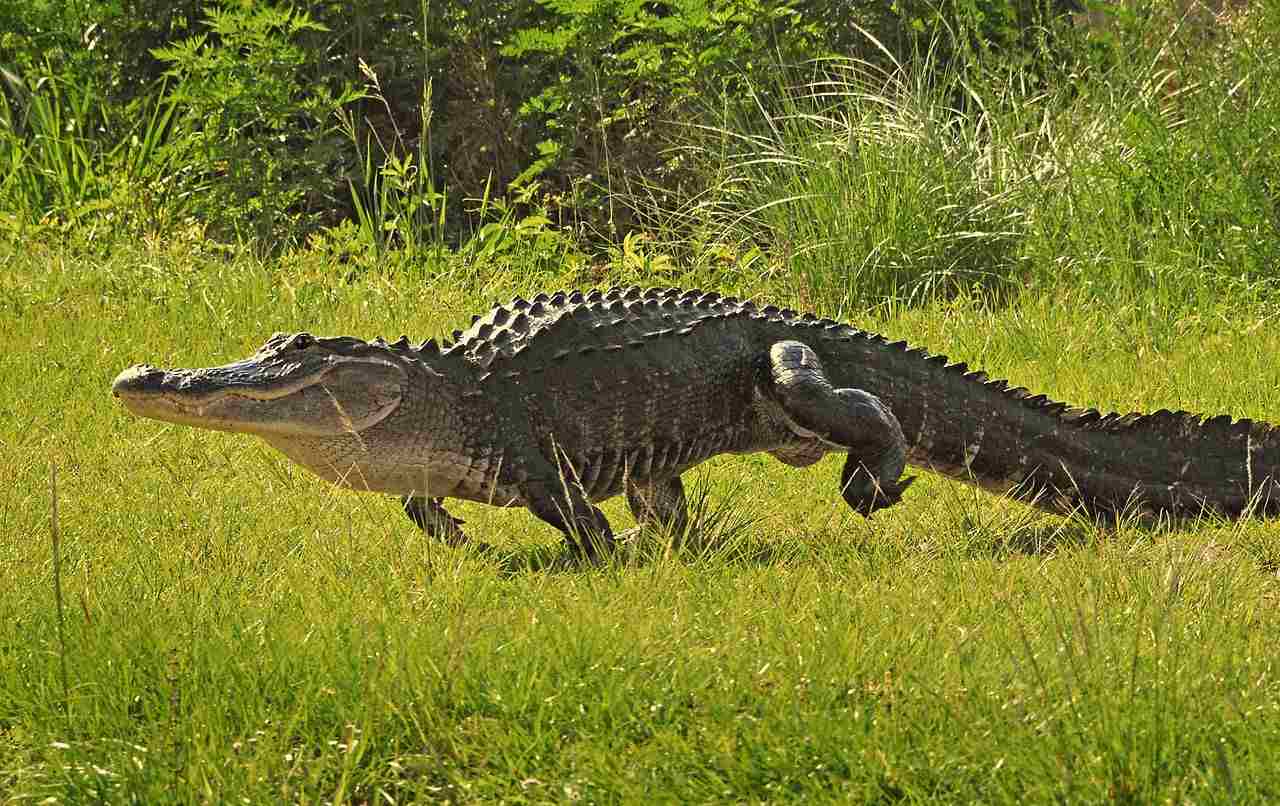
Alligator:
Land speed: Up to 11 mph (17.7 km/h)
Water speed: Around 20 mph (32 km/h)
Bear:
Varies by species; generally 30 mph (48 km/h) or less
Comparison: Alligators exhibit impressive speed in water, surpassing bears in aquatic environments, while bears are generally faster on land.
Ecological Implications: Speed adaptations influence hunting efficiency, escape strategies, and the overall ecological roles of these species in their respective habitats.
9. Agility:
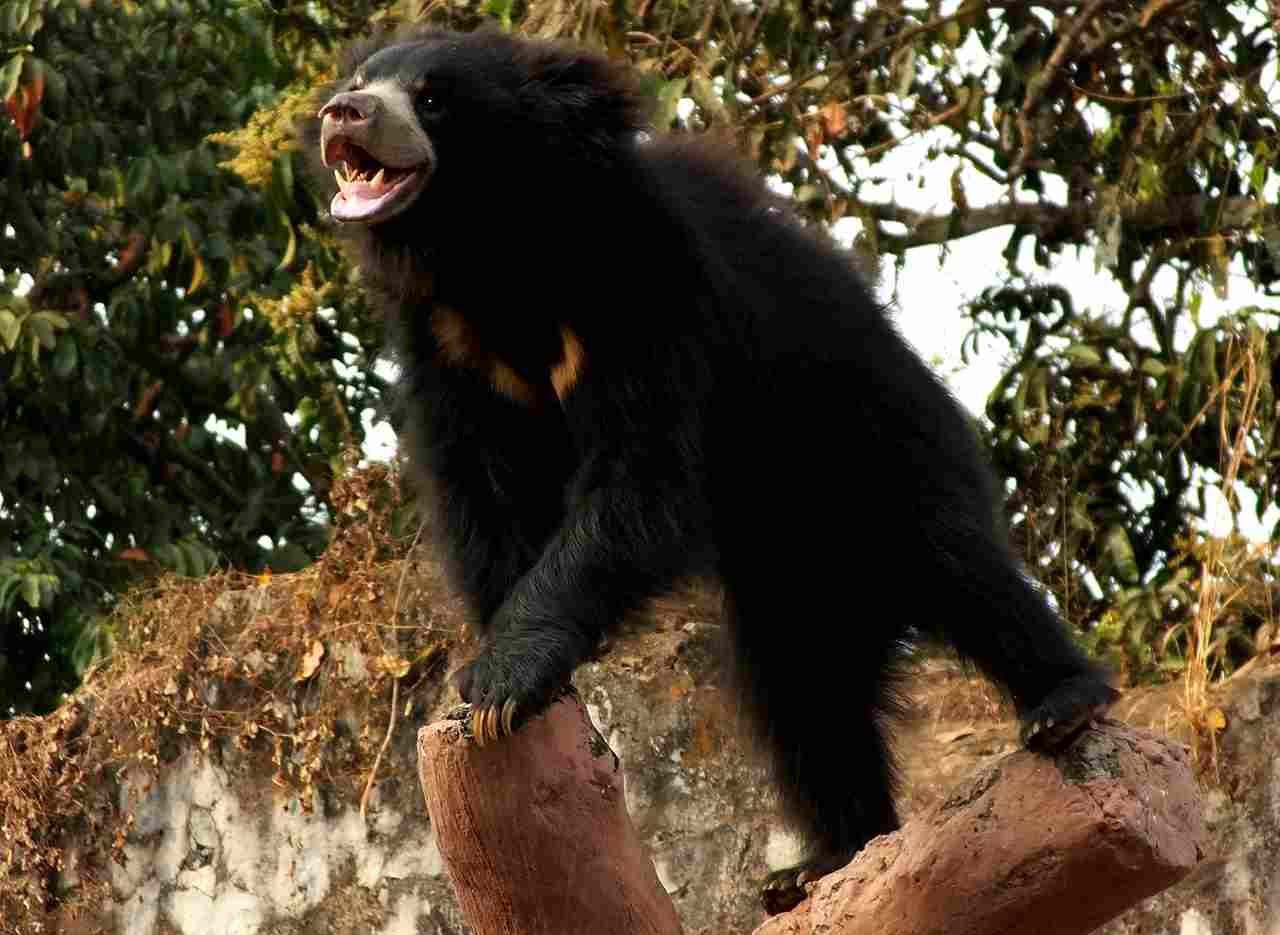
Alligator:
Agile in water, with quick and precise movements
Bear:
Agile on land, capable of climbing trees and navigating varied terrain
Comparison: Alligators showcase agility in their aquatic environments, while bears demonstrate agility on land, allowing them to access different food sources and escape threats.
Ecological Implications: Agility contributes to the versatility of these species, affecting their ability to navigate and exploit resources within their habitats.
10. Senses:
Alligator:
Excellent eyesight both above and below water
Acute sense of hearing
Sensory pits on the snout detect vibrations in water
Bear:
Good eyesight, particularly for close-range vision
Excellent sense of smell
Relatively good hearing
Comparison: Alligators rely on a combination of visual acuity, keen hearing, and sensory pits for detecting prey, while bears excel in smelling and have good eyesight for their terrestrial activities.
Ecological Implications: Variations in sensory capabilities influence the hunting strategies and ecological roles of these species within their respective habitats.
11. Overall Physical Capacity:
Alligator:
Adapted for stealthy underwater movement
Powerful bite and robust body for effective predation
Bear:
Versatile physical abilities for terrestrial activities, including running, climbing, and digging
Comparison: Alligators are specialized for aquatic predation, while bears exhibit a broader range of physical capacities suited to diverse terrestrial environments.
Ecological Implications: Physical capacities determine the ecological niches these species occupy and impact their roles within ecosystems.
12. Habitat Preference(s):

Alligator:
Freshwater habitats such as swamps, rivers, and lakes
Bear:
Diverse habitats, including forests, tundra, mountains, and grasslands
Comparison: Alligators predominantly inhabit freshwater environments, whereas bears exhibit habitat versatility, allowing them to thrive in various ecosystems.
Ecological Implications: Habitat preferences influence the distribution and potential interactions with other species in their respective ecosystems.
13. Tracks:
Alligator:
Webbed footprints on mud, often showing tail drag marks
Bear:
Paw prints with distinct claw marks, varying in size among species
Comparison: Alligator tracks exhibit webbed patterns, reflective of their aquatic lifestyle, while bear tracks display claw marks and size variations based on species.
Ecological Implications: Track identification aids in monitoring and understanding the presence and behavior of these species in their habitats.
14. Lifespan:
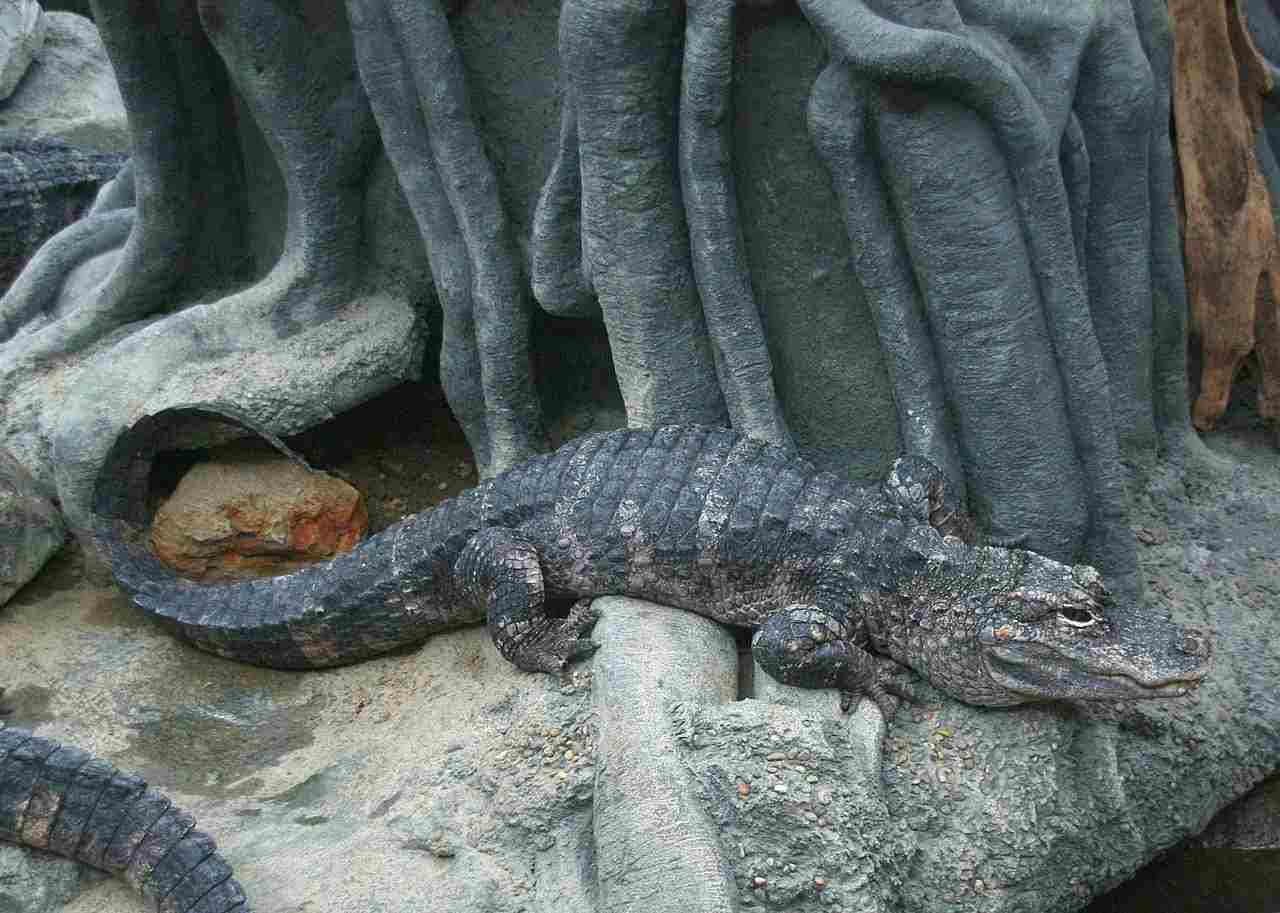
Alligator:
Up to 50-70 years in the wild
Bear:
Varies by species; e.g., 20-30 years for brown bears
Comparison: Alligators generally have longer lifespans compared to many bear species.
Ecological Implications: Lifespan impacts the reproductive strategies, population dynamics, and overall ecological contributions of these species within their habitats.
15. Mode of Feeding:
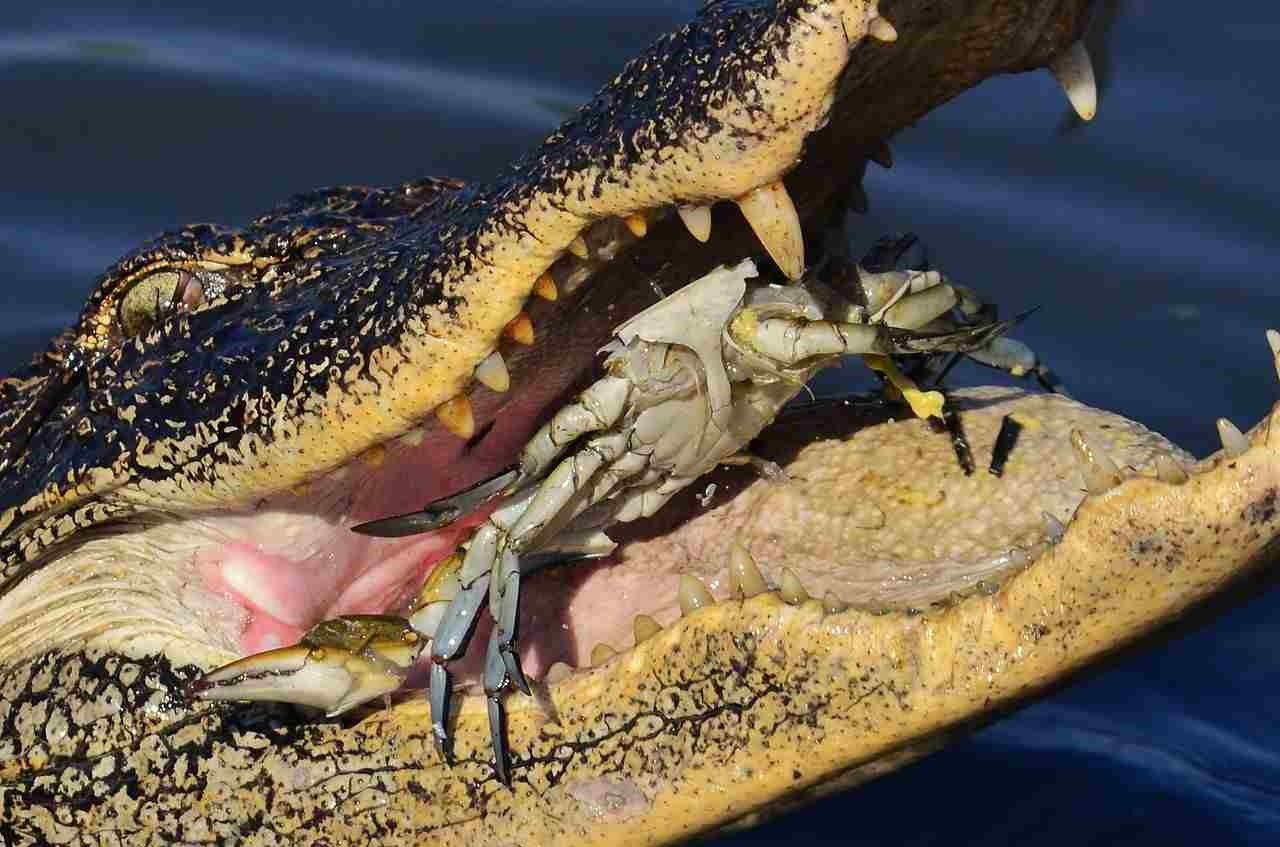
Alligator:
Ambush predator; waits for prey near water’s edge, then attacks with a swift bite
Bear:
Omnivorous diet; forages for plant matter, insects, fish, and occasionally hunts large mammals
Comparison: Alligators employ an ambush strategy focused on aquatic prey, while bears exhibit a more diverse, omnivorous feeding behavior.
Ecological Implications: Feeding habits influence the ecological roles of these species, affecting prey populations and plant communities in their respective habitats.
16. Intelligence:
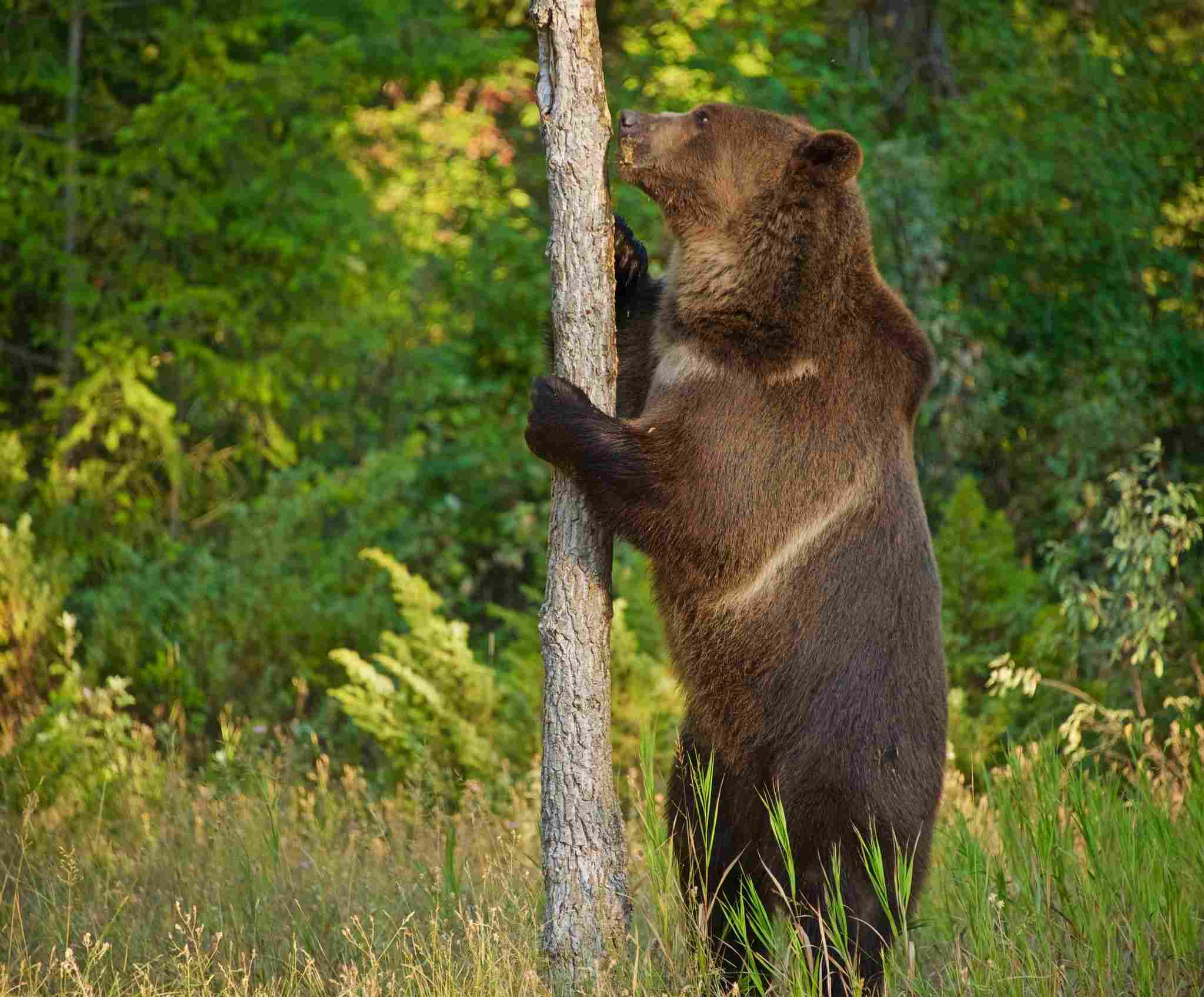
Alligator:
Basic problem-solving abilities, limited social behavior
Bear:
Higher cognitive abilities, capable of learning and problem-solving
Varied social structures among species
Comparison: Bears generally exhibit higher intelligence compared to alligators, with more complex cognitive abilities and social structures.
Ecological Implications: Intelligence impacts foraging strategies, adaptation to environmental changes, and interactions with other species within ecosystems.
17. Social Behavior:
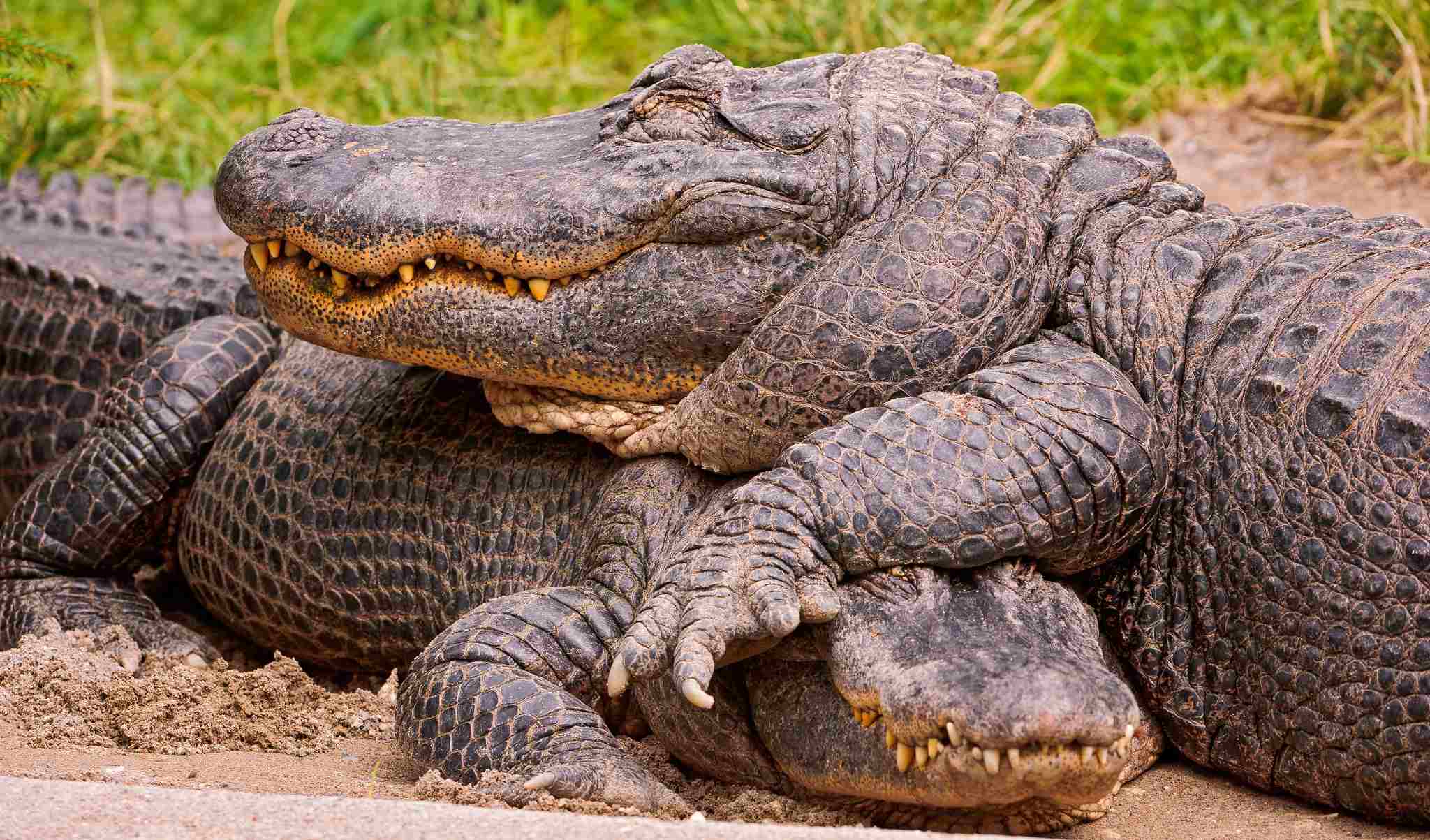
Credit: Tambako The Jaguar 2011 (CC BY-ND 2.0)
Alligator:
Generally solitary, except during mating season
Bear:
Varies by species; some solitary, while others may exhibit social behavior, especially mothers with cubs
Comparison: Alligators are predominantly solitary, while bears show a range of social behaviors, influenced by species and life stages.
Ecological Implications: Social behaviors affect population dynamics, resource utilization, and overall ecological interactions within their respective habitats.
18. Mode of Reproduction:
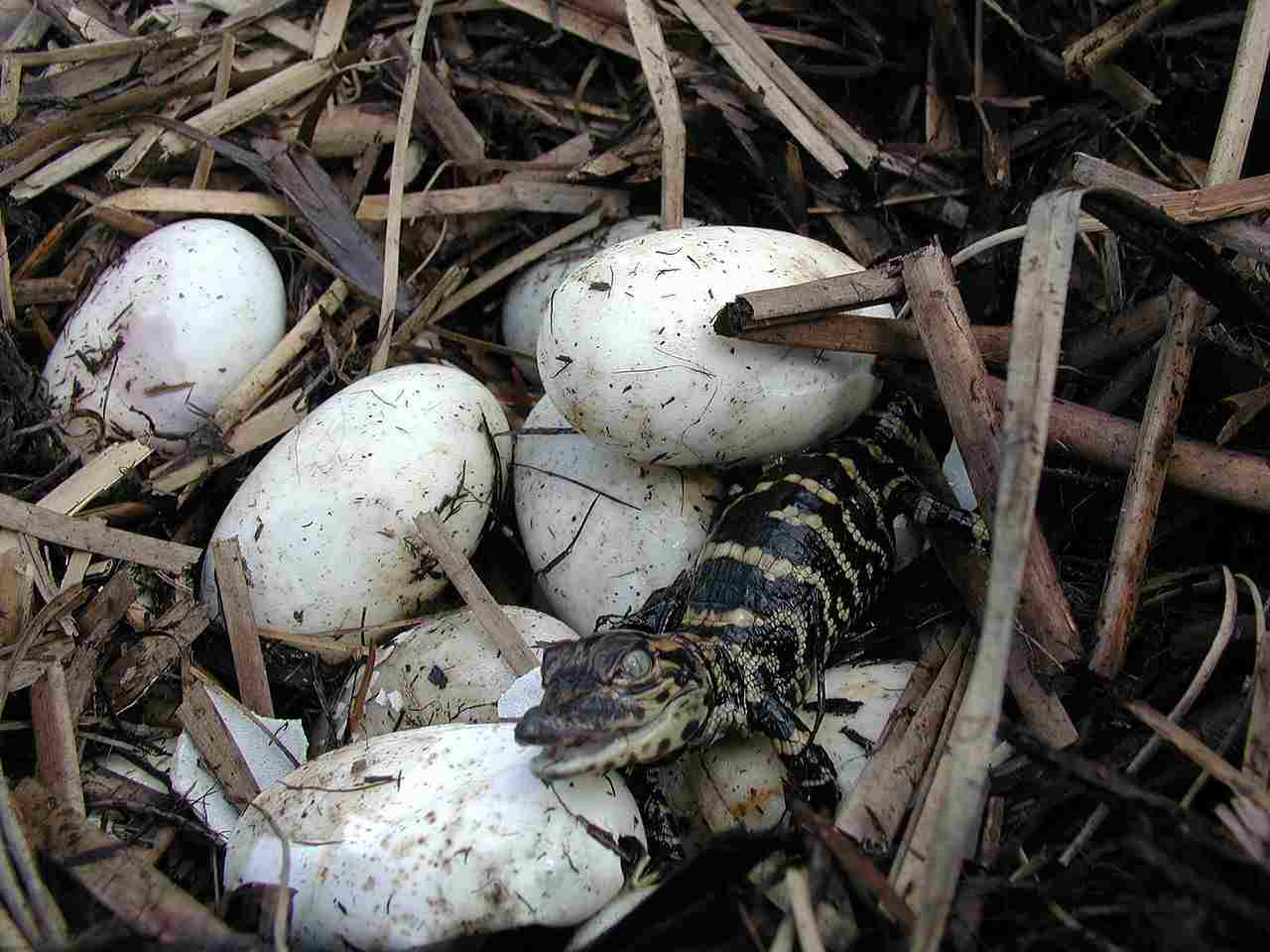
Alligator:
Oviparous; females lay eggs in nests, and the temperature determines the sex of the hatchlings
Bear:
Viviparous; females give birth to live cubs after a gestation period
Comparison: Alligators reproduce through egg-laying, while bears give birth to live offspring.
Ecological Implications: Reproductive strategies impact population dynamics and the survival of offspring, influencing the ecological balance within their habitats.
19. Parental Behavior:
Alligator:
Female guards the nest, assists hatchlings to water; limited parental care
Bear:
Extensive maternal care, with mothers nursing and protecting cubs for an extended period
Comparison: Bears exhibit more involved parental care compared to alligators.
Ecological Implications: Parental behaviors affect the survival rates of offspring and contribute to the overall population dynamics within ecosystems.
20. Proximity to Human-Inhabited Areas:
Alligator:
May inhabit urban areas, particularly in the southeastern United States
Bear:
Encounters with bears can occur in proximity to human communities, especially in regions with overlapping habitats
Comparison: Both alligators and bears may come into proximity with human-inhabited areas.
Ecological Implications: Human-wildlife interactions impact the behavior, survival, and management considerations for these species in shared environments.
21. Behavior Toward Humans:
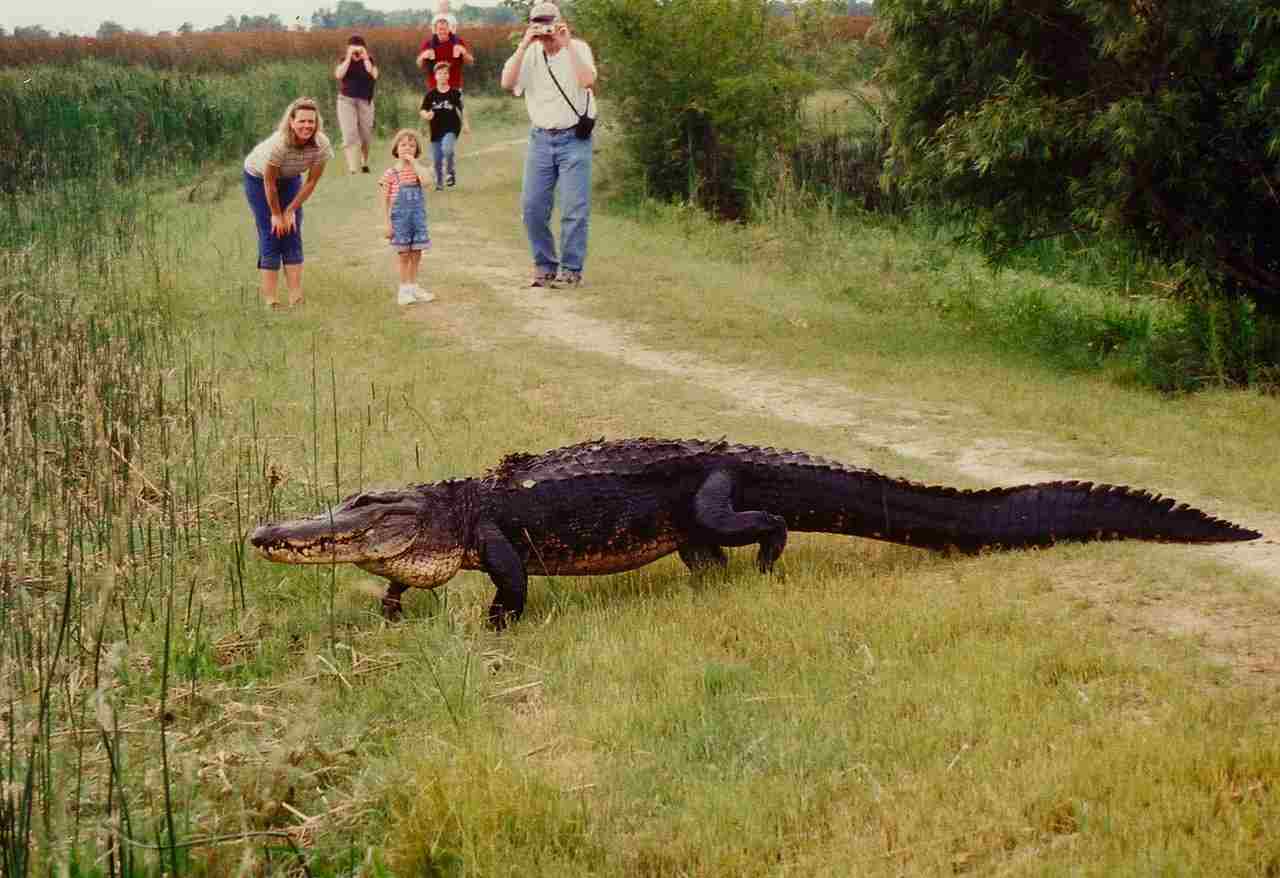
Alligator:
Typically avoids human contact; defensive when threatened
Bear:
Varied; some bears may avoid humans, while others might become habituated or show aggressive behavior
Comparison: Alligators generally exhibit more avoidance behavior, while bear behavior toward humans varies widely.
Ecological Implications: Understanding behavior toward humans is crucial for managing potential conflicts and ensuring the safety of both wildlife and people in shared habitats.
22. Danger Posed to Humans:
Alligator:
Rarely pose a significant threat; attacks are infrequent and often result from human provocation or intrusion
Bear:
Can pose a risk, especially if surprised, cornered, or if a bear associates humans with food
Comparison: Alligators are generally less dangerous to humans than bears, with attacks being rarer and often avoidable through proper precautions.
Ecological Implications: Understanding the potential danger posed by these species is crucial for developing effective conservation and management strategies.
23. Associated Precautions:
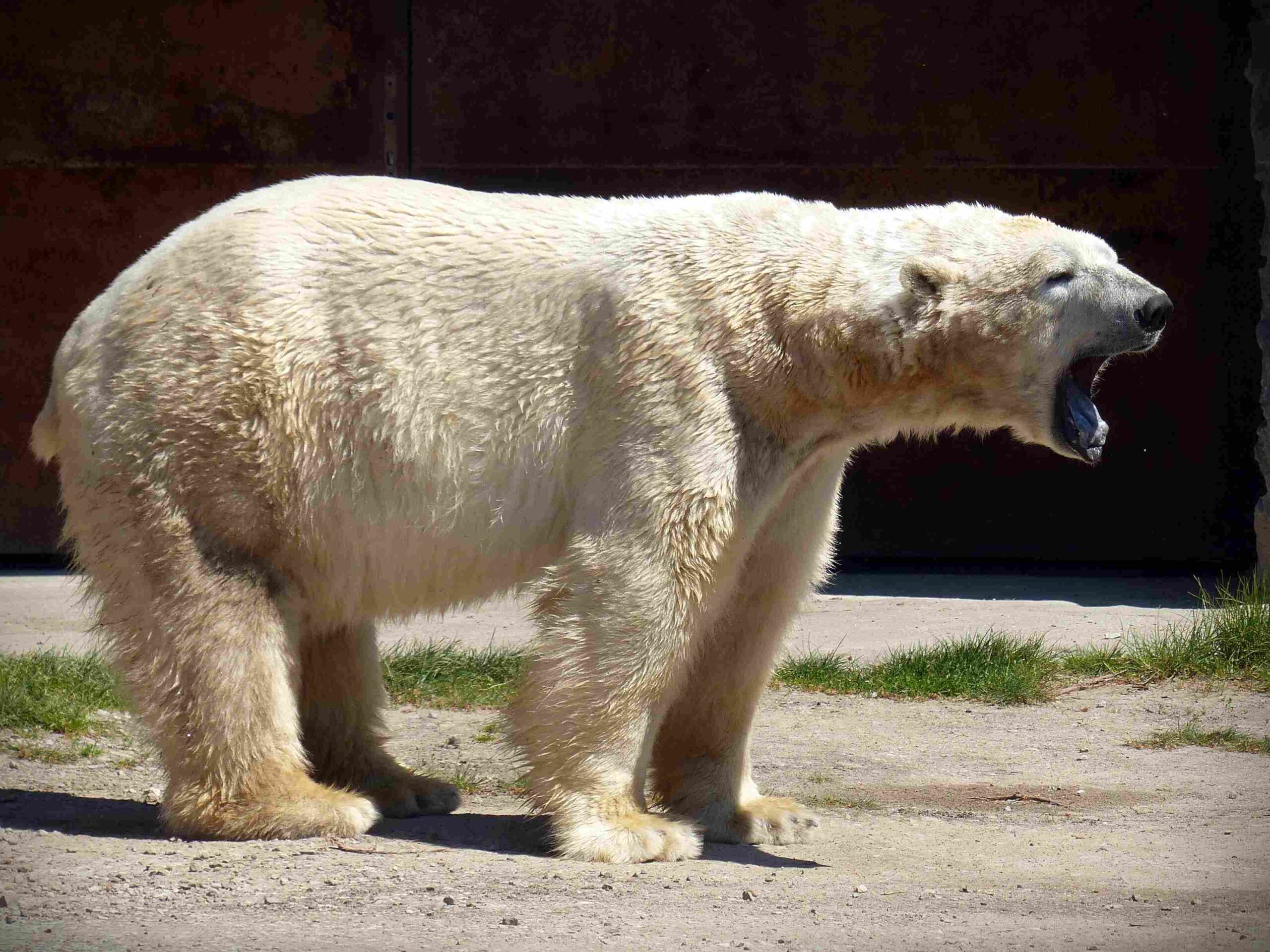
Alligator:
Caution around freshwater bodies, especially in known alligator habitats
Avoid provoking or approaching alligators in the wild
Bear:
Proper food storage in bear country to prevent habituation
Make noise while hiking to alert bears to human presence
Comparison: Precautions for alligators involve awareness near water, while bear precautions focus on minimizing human-bear conflicts through proper behavior in shared habitats.
Ecological Implications: Human behavior and precautions directly impact the safety of both humans and wildlife, contributing to the coexistence of these species in shared environments.
24. Conservation Status:
Alligator:
American alligator: Least Concern
Chinese alligator: Endangered
Bear:
Varies by species; e.g., polar bear: Vulnerable, while some brown bear populations are of Least Concern
Comparison: Conservation statuses vary among different species, with some bears facing higher conservation concerns than alligator species.
Ecological Implications: Conservation efforts need to address the specific threats and challenges faced by each species to ensure their long-term survival and the health of their ecosystems.
Summary of Comparison
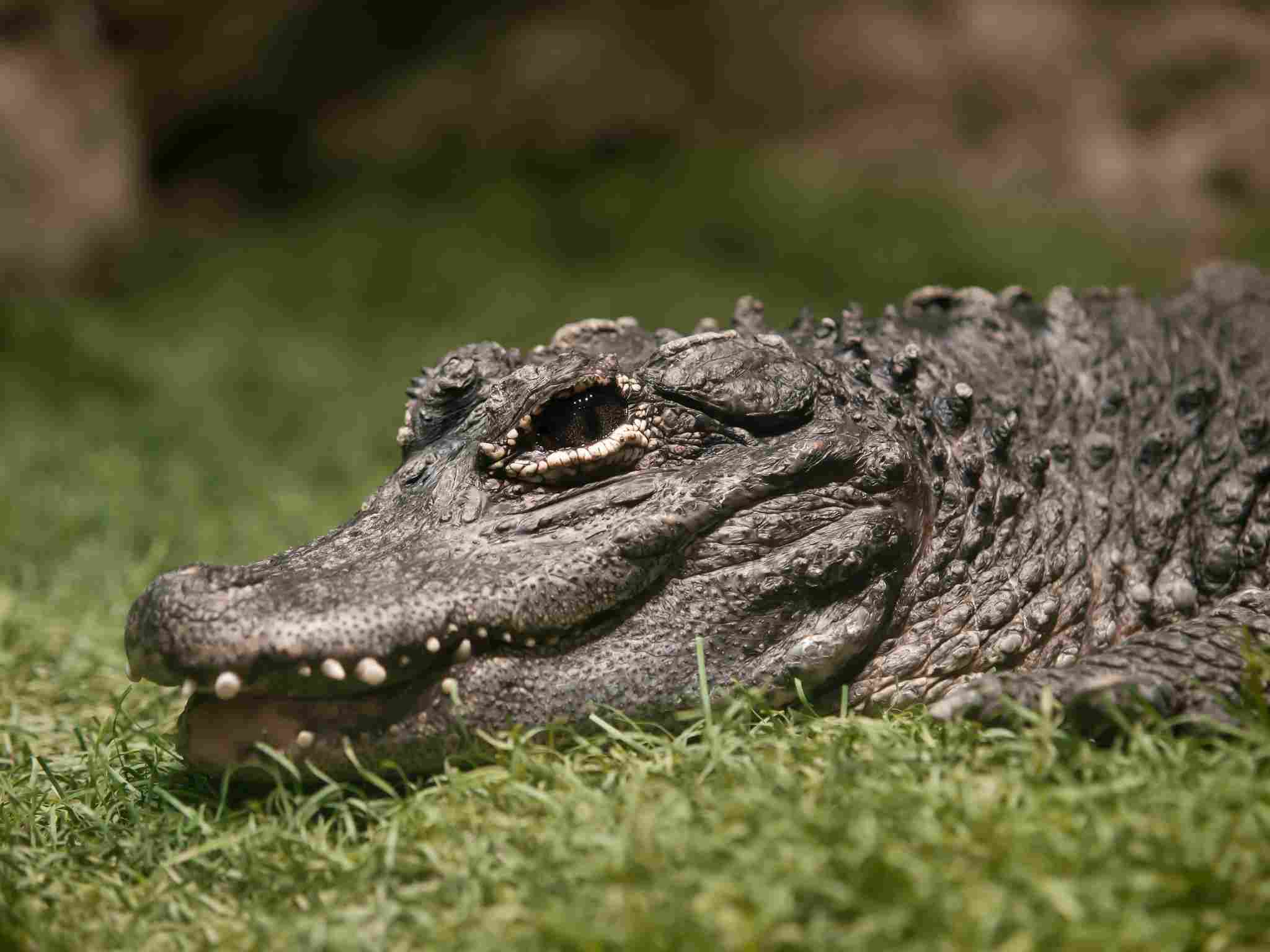
Taxonomy:
Alligator: Crocodylia, Alligatoridae, Alligator genus, A. mississippiensis (American), A. sinensis (Chinese)
Bear: Carnivora, Ursidae, Ursus genus, Various species (e.g., brown bear, black bear, polar bear)
Appearance:
Alligator: Robust, U-shaped snout, dark coloration
Bear: Varied fur color, hump on shoulders, distinctive snout
Size:
Alligator: 9-15 feet length
Bear: Varies by species, up to 10 feet length
Weight:
Alligator: 500-1,000 pounds
Bear: 200-1,500 pounds
Bite Force (PSI):
Alligator: ~2,125 PSI
Bear: Varies by species, estimated 600-1,200 PSI
Physical Offensive Advantages:
Alligator: Strong jaws, powerful tail
Bear: Sharp claws, strong bite
Physical Defensive Advantages:
Alligator: Armored skin, agile movements in water
Bear: Strength, climbing abilities
Speed:
Alligator: Land – 11 mph, Water – 20 mph
Bear: Varies by species, generally up to 30 mph
Agility:
Alligator: Agile in water
Bear: Agile on land, climbing abilities
Senses:
Alligator: Excellent eyesight, acute hearing, sensory pits
Bear: Good eyesight, excellent smell, good hearing
Overall Physical Capacity:
Alligator: Streamlined for aquatic movement
Bear: Versatile for terrestrial activities
Habitat Preference(s):
Alligator: Freshwater habitats
Bear: Diverse habitats, including forests, tundra
Tracks:
Alligator: Webbed footprints, tail drag marks
Bear: Paw prints with claw marks
Lifespan:
Alligator: Up to 50-70 years
Bear: Varies by species, e.g., 20-30 years for brown bears
Mode of Feeding:
Alligator: Ambush predator in water
Bear: Omnivorous, forages for various food sources
Intelligence:
Alligator: Basic problem-solving, limited social behavior
Bear: Higher cognitive abilities, varied social structures
Social Behavior:
Alligator: Generally solitary
Bear: Varies by species, some solitary, some social
Mode of Reproduction:
Alligator: Oviparous, lays eggs
Bear: Viviparous, gives birth to live cubs
Parental Behavior:
Alligator: Limited parental care
Bear: Extensive maternal care
Proximity to Human-Inhabited Areas:
Both can inhabit areas near human communities
Behavior Toward Humans:
Alligator: Typically avoids humans
Bear: Varied behavior, from avoidance to aggression
Danger Posed to Humans:
Alligator: Rarely poses a significant threat
Bear: Can pose a risk, especially if surprised or habituated
Associated Precautions:
Alligator: Caution around water
Bear: Proper food storage, making noise in bear country
Conservation Status:
Alligator: American – Least Concern, Chinese – Endangered
Bear: Varies by species, e.g., polar bear – Vulnerable, some brown bear populations – Least Concern
Conclusion
I). Similarities:
Both alligators and bears can inhabit areas close to human communities.
Conservation efforts are essential to maintain healthy populations of both species.
II). Differences:
Alligators are generally less dangerous to humans than bears.
Reproductive strategies, parental behaviors, and ecological roles vary significantly between alligators and bears.
